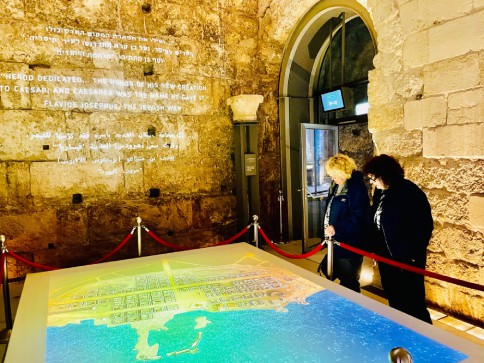The Roman port of Caesarea Maritima was one of the most important ports in the ancient world. It was built by Herod the Great in the first century BC and was used to trade goods and people between the Roman Empire and the Middle East.
Caesarea Ultimate Guide

The port was located on the Mediterranean Sea, about halfway between Tel Aviv and Haifa. It was built in a sheltered bay, making ships safe to dock. The port was also protected by two large breakwaters, which helped to prevent the waves from damaging the vessel.
Furthermore, the port was a major center for trade and commerce. Goods from the Roman Empire and the Middle East were brought to the port, including grain, wine, olive oil, and spices. The port was also a major center for shipbuilding.
The port was also a substantial military base. It was used by the Roman army to control the region and to launch attacks against its enemies.
Roman Concrete

The Decline of the Roman Port in Caesarea
The port of Caesarea Maritima declined in importance after the fall of the Roman Empire. However, it is still an important archaeological site. The ruins of the port can still be seen today, providing a fascinating glimpse into the past.
Here are some of the things you can see at the Roman port of Caesarea Maritima:
The Roman port of Caesarea Maritima is a fascinating place to visit. It is a reminder of the importance of this port in the ancient world, and it is a testament to the engineering skills of the Romans.
Here are some tips for planning your visit to the Roman port of Caesarea Maritima:
The site is open from 8:00 AM to 4:00 PM, but it is best to visit early in the day to avoid the crowds.
There is a small admission fee to the site.
Wear comfortable shoes and clothing, as a lot of walking is involved. Bring sunscreen and a hat, even on cloudy days.
Bring a refillable water bottle.
I hope you have a great time exploring the Roman port of Caesarea Maritima! Here is a link to the National Park Website!
The Cultic Area in Caesarea

